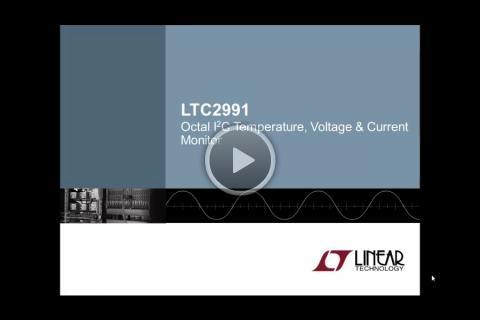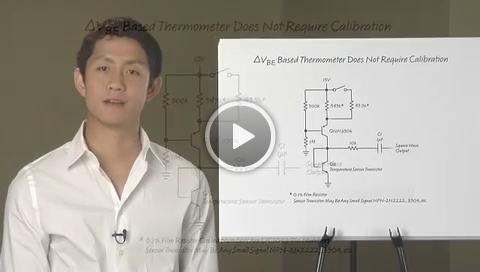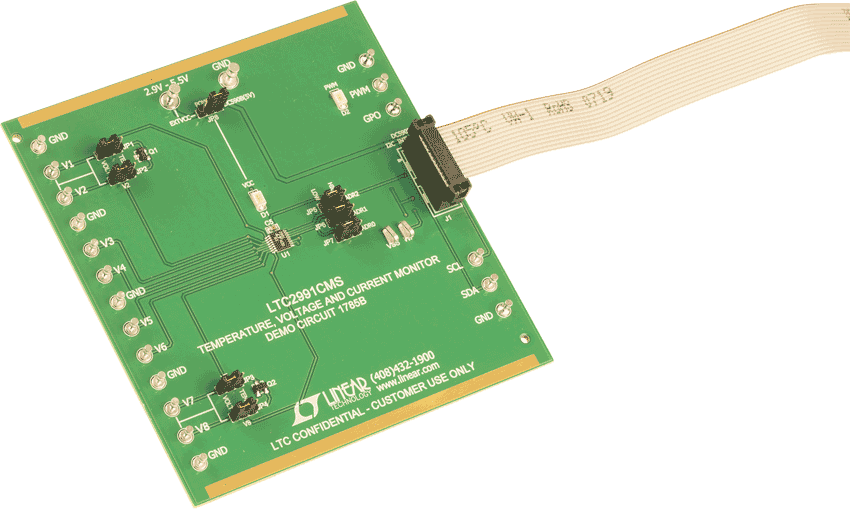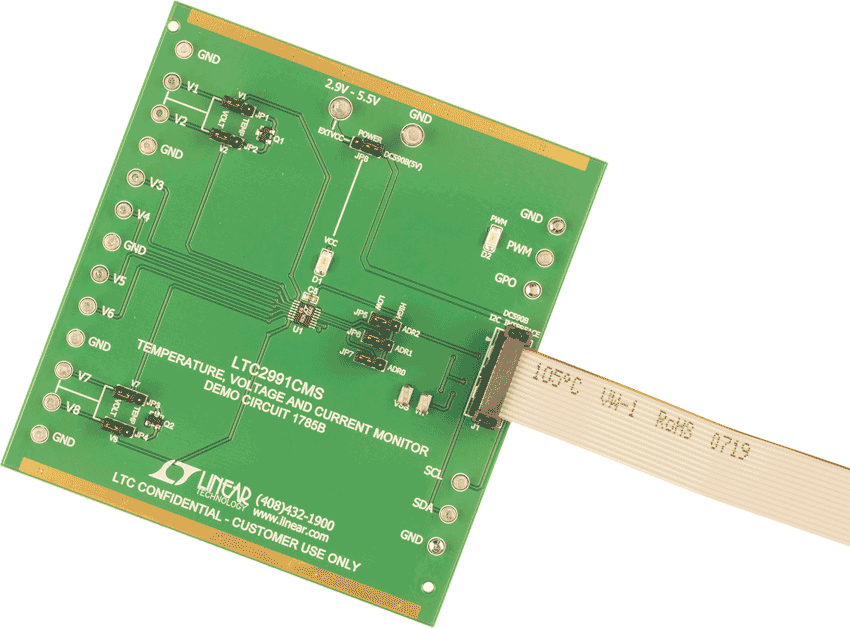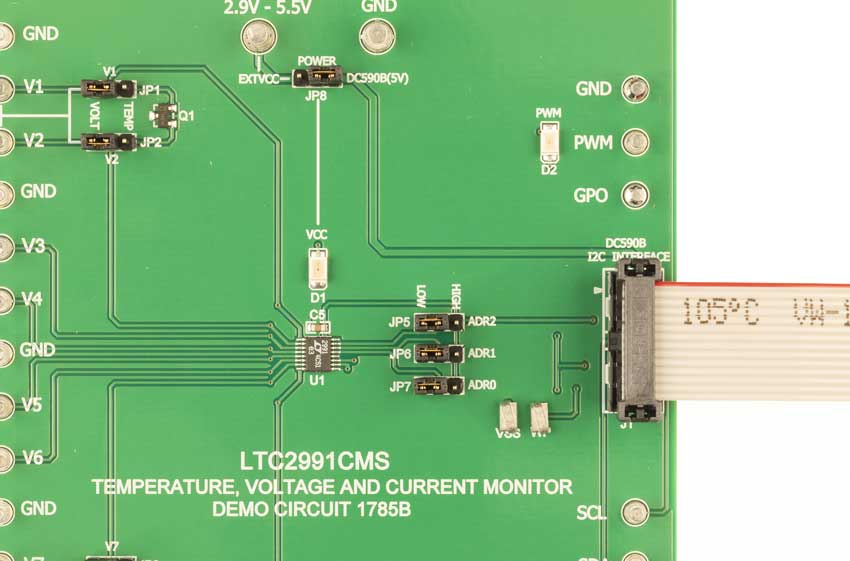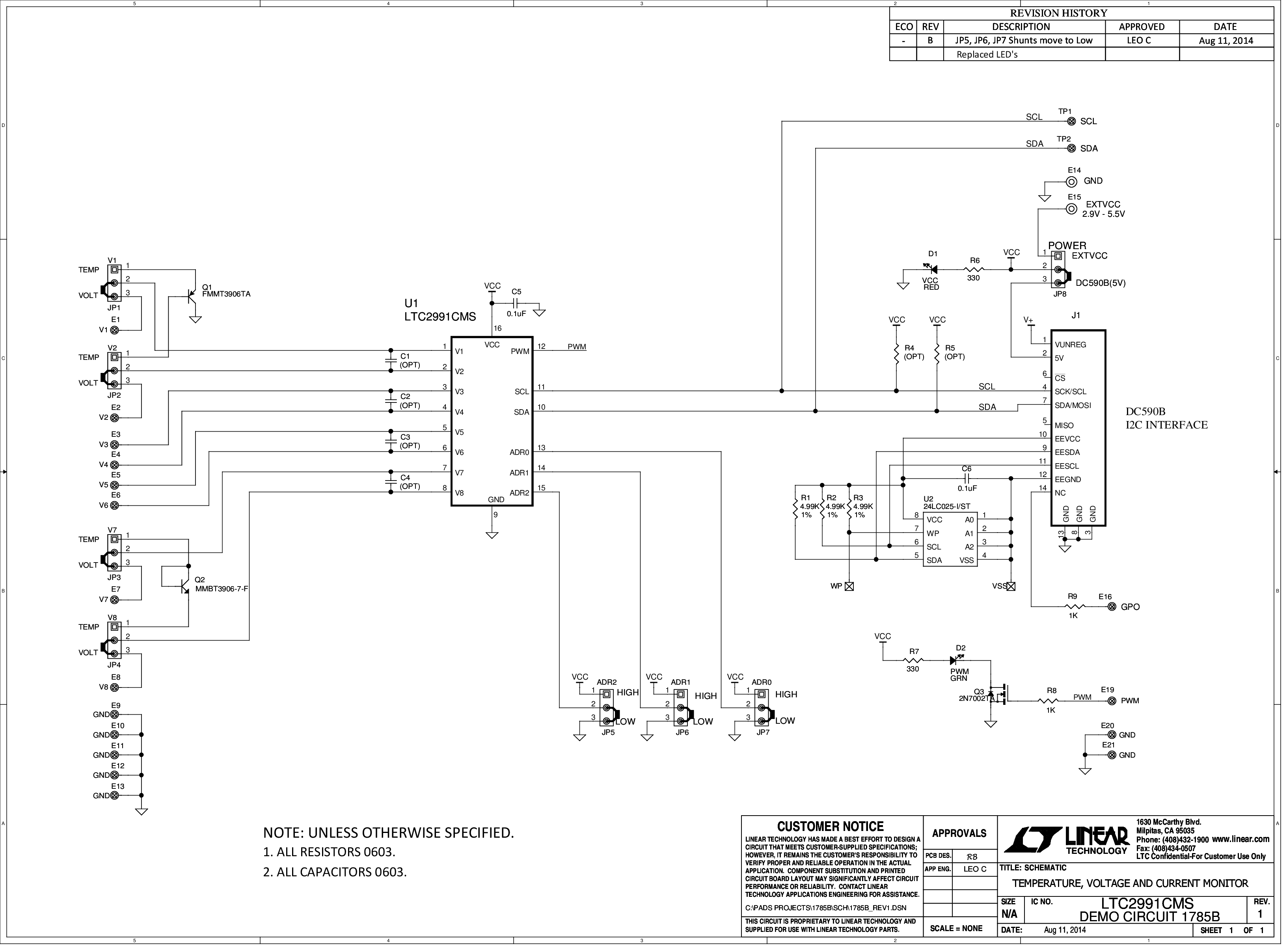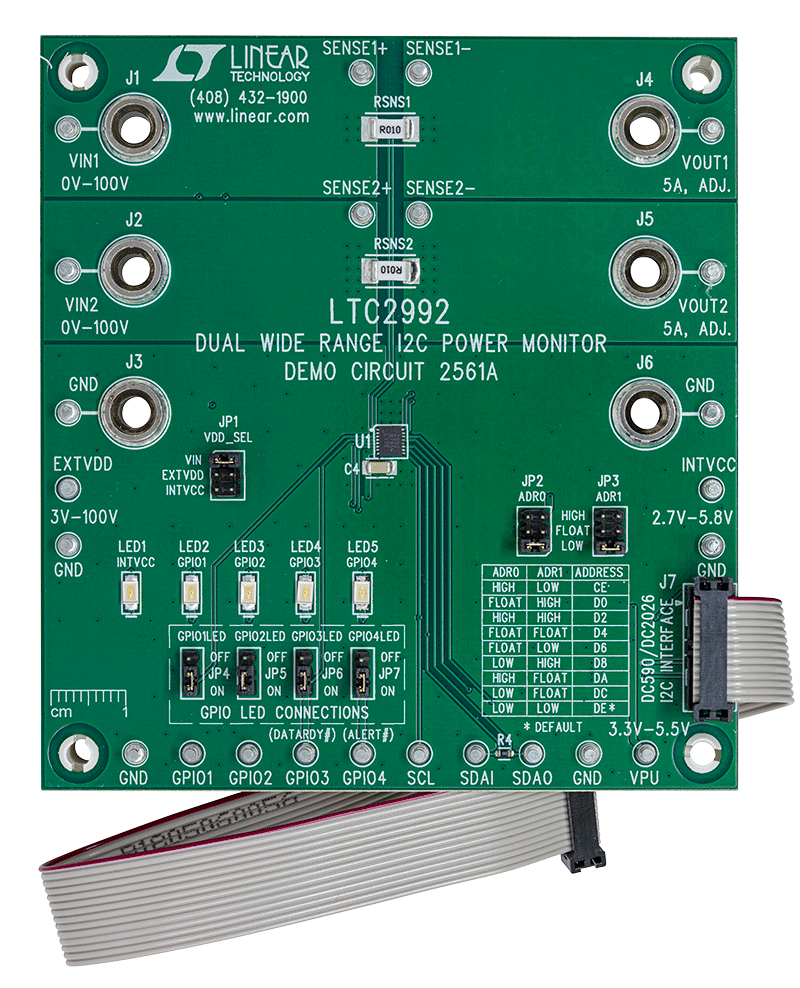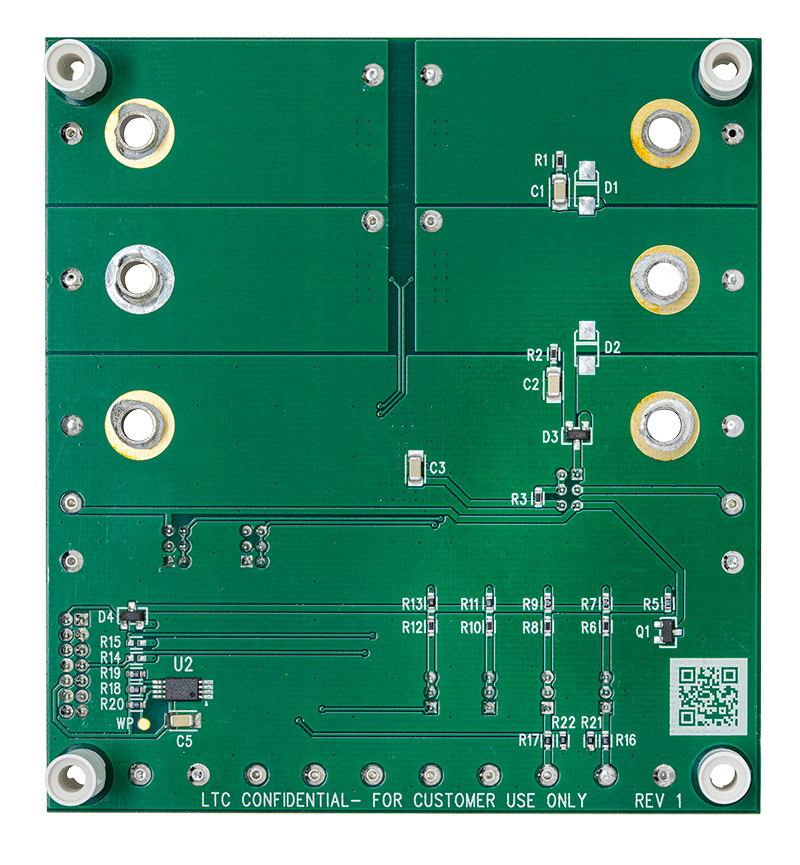LTC2991
RECOMMENDED FOR NEW DESIGNSOctal I2C Voltage, Current, and Temperature Monitor
- Part Models
- 4
- 1ku List Price
- Starting From $5.37
Part Details
- Measures Voltage, Current, Temperature
- Measures Four Remote Diode Temperatures
- 0.7°C (Typ) Accuracy, 0.06°C Resolution
- 1°C (Typ) Internal Temperature Sensor
- Series Resistance Cancellation
- 14-Bit ADC Measures Voltage/Current
- PWM Temperature Output
- 3V to 5.5V Supply Operating Voltage
- Eight Selectable Addresses
- Internal 10ppm/°C Voltage Reference
- V1 to V8 Inputs ESD Rated to 6kV HBM
- 16-Lead MSOP Package
The LTC2991 is used to monitor system temperatures, voltages and currents. Through the I2C serial interface, the eight monitors can individually measure supply voltages and can be paired for differential measurements of current sense resistors or temperature sensing transistors. Additional measurements include internal temperature and internal VCC. The internal 10ppm reference minimizes the number of supporting components and area required. Selectable address and configurable functionality give the LTC2991 flexibility to be incorporated in various systems needing temperature, voltage or current data. The LTC2991 fits well in systems needing submillivolt voltage resolution, 1% current measurement and 1°C temperature accuracy or any combination of the three.
Applications
- Temperature Measurement
- Supply Voltage Monitoring
- Current Measurement
- Remote Data Acquisition
- Environmental Monitoring
Documentation
Data Sheet 1
Reliability Data 1
User Guide 1
Application Note 2
Technical Articles 2
Video 2
Product Selector Card 3
Device Drivers 1
Analog Dialogue 2
Webcast 1
ADI has always placed the highest emphasis on delivering products that meet the maximum levels of quality and reliability. We achieve this by incorporating quality and reliability checks in every scope of product and process design, and in the manufacturing process as well. "Zero defects" for shipped products is always our goal. View our quality and reliability program and certifications for more information.
| Part Model | Pin/Package Drawing | Documentation | CAD Symbols, Footprints, and 3D Models |
|---|---|---|---|
| LTC2991CMS#PBF | 16-Lead MSOP | ||
| LTC2991CMS#TRPBF | 16-Lead MSOP | ||
| LTC2991IMS#PBF | 16-Lead MSOP | ||
| LTC2991IMS#TRPBF | 16-Lead MSOP |
| Part Models | Product Lifecycle | PCN |
|---|---|---|
|
Feb 4, 2020 - 20_0132 Laser Top Mark for 16-Lead MSOP Packages Assembled in ADPG and UTAC |
||
| LTC2991CMS#PBF | PRODUCTION | |
| LTC2991CMS#TRPBF | PRODUCTION | |
| LTC2991IMS#PBF | PRODUCTION | |
| LTC2991IMS#TRPBF | PRODUCTION | |
This is the most up-to-date revision of the Data Sheet.
Software Resources
Device Drivers 1
Evaluation Software 0
Can't find the software or driver you need?
Hardware Ecosystem
| Parts | Product Life Cycle | Description |
|---|---|---|
| Accelerometers 1 | ||
| LTC4311 | PRODUCTION | Low Voltage I2C/SMBus Accelerator |
| Analog-to-Digital Converters (ADCs) 1 | ||
| LTC2990 | RECOMMENDED FOR NEW DESIGNS | Quad I2C Voltage, Current and Temperature Monitor |
| Current Sense Amplifiers 1 | ||
| LTC6102 | PRODUCTION | Precision Zero Drift Current Sense Amplifier |
| Interface Transceivers & Isolators 1 | ||
| LTM2883 | PRODUCTION | SPI/Digital or I2C μModule Isolator with Adjustable ±12.5V and 5V Regulated Power |
| Level Translators & Buffers 1 | ||
| LTC4317 | PRODUCTION | Dual I2C/SMBus Address Translator |
Tools & Simulations
Linduino 3
LTspice® is a powerful, fast and free simulation software, schematic capture and waveform viewer with enhancements and models for improving the simulation of analog circuits.
Linduino is Analog Devices’ Arduino compatible system for developing and distributing firmware libraries and example code for our integrated circuits. Each Linduino-supported product includes an example main program, defined in the LTSketchbook/Part Number folder and driver code, defined in the LTSketchbook/libraries folder.
Linduino code repository on GitHub and instructions on how to use the code.
Evaluation Kits
Latest Discussions
No discussions on LTC2991 yet. Have something to say?
Start a Discussion on EngineerZone®
